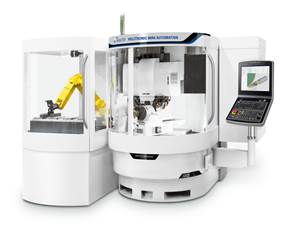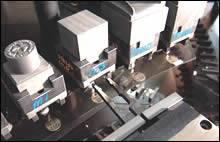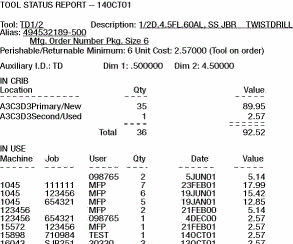Toolroom Management: Presetting Increases Profits And Productivity
Guidelines for selecting the right tool presetting and measuring system to realize savings.
Manufacturers are eternally seeking ways to maximize efficiencies throughout their production pro-cess. The first thought that usually comes to mind is to upgrade existing capital equipment under the assumption that a new
machining center’s slightly higher speeds and faster cycle times are the best solution. In some cases this may be true, however, another much less expensive investment is often overlooked while trying to streamline the production process.
Needing a Presetter
Most machining centers are actually cutting less than 50 percent of the time during a typical day or shift—the rest of the time they sit idle while operators are preparing the workholding and tooling for the next cycle, essentially wasting valuable spindle cutting time. Reducing spindle downtime is the key component to maximizing production efficiency, and these results can be partially achieved by simply investing in a tool presetter and modifying toolroom management standards. This can all be done with a minimal investment, an excellent alternative to buying all new expensive machine tools.
Increase Production, Reduce Setup Time and Minimize Spindle Downtime
The greatest potential for savings and productivity is in tooling setup reduction. Unfortunately, many shops continue to use the machine tool spindle as a presetter, costing hundreds of thousands of dollars in machine time annually.
Consider, for example, a shop running four CNC mills for two shifts per day at a shop rate of $40 per hour. If each operator takes only one hour per shift on each machine for tool setup, the shop is losing about $320 per day, or $80,000 per year, to spindle downtime. If this allotted setup time isn’t sufficient to ensure optimal cutting conditions, short tool life and scrapped parts will quickly erode profits. A presetter will virtually eliminate these factors.
In many shops, operators are required to gather all necessary tools from a centralized tool crib, then begin setting them up. The acquisition of a tool presetter will allow the tool attendant to shift focus from inventory management to acquiring a better understanding of the machining process, fixturing, measuring tool lengths/diameters and other setup procedures. Operators can preset cutters with adjustable cutting edges for a balanced chip load, rather than setting these indexable tools on the machining center. Offline adjustment of boring-bar length and diameter can reduce tool-changeover time at the machine spindle from 15 minutes to less than one minute. The machine operator will be able to acquire a completely qualified set of tools to a machining center, get them loaded and go directly into production, thus minimizing non-cutting time on the machine tool.
Proven Results
One company purchased a tool presetting system and started presetting all required tools before machining began on a job. The newly implemented system dramatically reduced setup scrap and allowed the company to identify if, and when, additional tooling needed to be ordered before a job was even started.
The company shared analysis of a 100-piece job to show the impressive savings. Historically, the job averaged between 60 and 100 hours of setup. The presetting system cut setup to less than 34 hours.
Selecting a Presetter
There are many tool presetters on the market, so it is very important to choose the one that will best complement a company’s processes. To find which presetter will best suit the company’s needs, first determine the maximum tool length (z-axis) and diameter (x-axis) to be measured. This will determine the presetter travel capacity necessary to measure the full range of tools used in-house. If future growth is likely, select a system that is slightly larger than currently required by the facility and has the capability to be upgraded and adapted to meet future demand.
It also is important to consider the tolerances that must be held during machining operations. How accurate and repeatable does the presetter need to be? Precision within 0.0001” is available, but isn’t necessary for every shop’s operation requirements.
Another aspect to consider when selecting a presetter is the different tool shanks used during operations. The presetter should be fixtured for the shanks that are run, whether they are standard V-flange, DIN-standard, BT-flange, NMTB or lathe tool shanks. Keep in mind that as job requirements change, so may your machine tool and the spindle connection. For this reason, presetter manufacturers offer adapters for a variety of tool shanks and tool holding systems besides the type that is supplied standard. Be sure to investigate the style of adapters offered by the presetter manufacturer and the simplicity of exchanging them. By supplying information on lengths, diameters, accuracy and shank style, a quality tool presetter vendor can help select the most cost-effective measuring system.
Contact Versus Noncontact
Two classes of presetters are available: contact and noncontact.
The magnetic-scale technology of earlier model contact presetters is outmoded. The newer glass scales and encoders now offer many advantages and much finer resolutions. Magnetic scales output a digital pulse and have a fixed resolution (generally 0.0005"). Glass scales output an analog signal, which allows the manufacturer to select the resolution on the readout to as fine as one-tenth of a micron.
By using shadow graphs, noncontact presetters provide a view of the tool profile for both inspection and presetting. Users of these systems can measure tool length and diameter, calculate nose radii and angles, and detect damaged or unusable cutting edges.
Noncontact presetters are recommended for most computer-integrated manufacturing applications, including flexible manufacturing systems and manufacturing cells, while contact units are more commonly used in cell-based applications.
Use of a noncontact presetting unit also is preferred for operations using toolroom management systems to reduce tool management time. Optical presetting becomes essential for high-speed machining and for operations where it is important not to touch the tool or where it is necessary to view and evaluate the integrity of the cutting surface. Given the state-of-the-art precision available today, user judgment has become the weakest link in the tool measuring and presetting process. Speroni vision systems not only eliminate all user judgment from the process, they further enhance the metrological characteristics of the machine.
Design Criteria
Once a contact or noncontact presetter is chosen, design criteria must be considered and selected for precision applications. To measure a tool accurately, it must be held accurately. The presetter’s spindle should have a high level of rigidity and minimal runout. High-force retention-knob clamping is essential for the presetter to consistently duplicate the way the tool sits in a machine tool spindle. A tool presetter constructed to the standards of machine tool assures the similar accuracies.
Also consider possible damage that can occur in the shop floor environment—an enclosed design provides dust protection for sensitive parts and makes the unit easy to clean. A sealed design may be essential, considering the coolant mists, welding or iron contaminants and temperature changes that can interfere with the instrument’s ability to provide repeatable and accurate measurement.
A tool presetter constructed solely of one material—such as aged pearlitic cast iron—may appear more costly than other presetters constructed of steel or aluminum. However, a temperature-stable structure like cast iron will prevent changes that could cause distortion in the linear axis or in the positioning of the guideways, thereby assuring that long-term repeatability and accuracy will not be compromised.
Presetter Features
After selecting the right presetter construction for the shop-floor environment, determine which system features will best benefit production.
Consider the following list of functions that are important to entry-level and cell-based users:
- Although it’s always prudent to verify the linear gauge references when tolerances are tight, machine-axis home position doesn’t require calibration every time the system is turned on. This is an added bonus of the more sophisticated readouts that are generally available only on presetters equipped with glass-scale and glass-encoder technology.
- In addition to larger numbers and buttons, digital readouts are now available with data memory for many different zero points. Rather than actually performing the calibration for a tool-shank changeover, a different zero point can simply be selected from the memory.
- Many presetters have the ability to switch back and forth from inch to millimeter, from radius to diameter, and from incremental to absolute measurements from a known gauge point.
- Some presetters allow fine adjustments of any distance along the z- and x-axis within the unit’s full range of travel. Others allow the operator to make geometrical calculations and store tool data in the presetter’s memory.
- A built-in label printer or computer connection allows you to print labels that may be affixed to tools, keep preset data handy for use at the machine, or download tool-offset data through a direct-numerical-control interface system or directly to machine tools.
Summary
Whatever a shop’s operations require, a carefully selected tool presetting system—following the guidelines presented above—will greatly increase efficiencies and enhance production leading to increased profits.
Related Content
Machining Center Spindles: What You Need to Know
Why and how to research spindle technology before purchasing a machining center.
Read MoreEntry-Level Cylindrical Grinding Machine
The Studer S100 is suitable for grinding geometrically defined basic forms and contours for a wide range of parts, all of which can be generated with the machine’s interpolating axes.
Read MoreConfigurable Machine Achieves Flexible Cutting Tool Production, Regrinding
The configurable Helitronic Mini Plus can fit as either a cost-effective basic machine or as a fully automated cutting tool grinding system.
Read MoreSurface Grinders Provide Smooth Table Tracking
IMTS 2024: Okamoto highlights its ACC-SA1 MDI controlled Saddle Type surface grinders, designed with three grinding cycles and a rigid wheelhead assembly to enable high-precision grinding and extended machine life.
Read MoreRead Next
Investments in Productivity: Automation Integration In the Toolroom
By integrating machining, workpiece and cutting tool management, CMM verification, and a Web-based video and control system, a completely integrated cell producing fully qualified electrodes through automated manufacturing can be created.
Read MoreThe Basics of Tool Management
Proper tool management is the key to saving money - and maybe even saving your business.
Read More

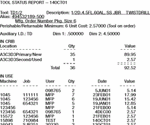
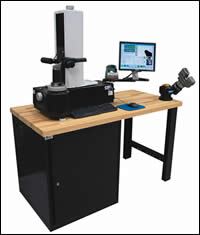
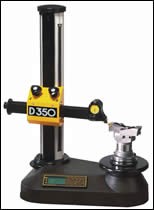
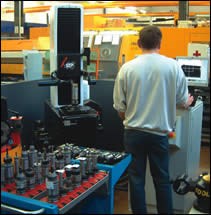



.png;maxWidth=300;quality=90)









